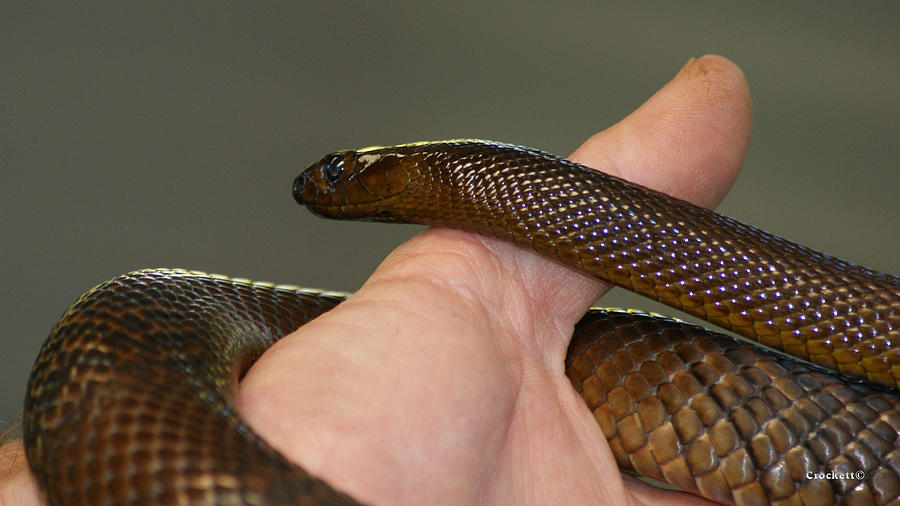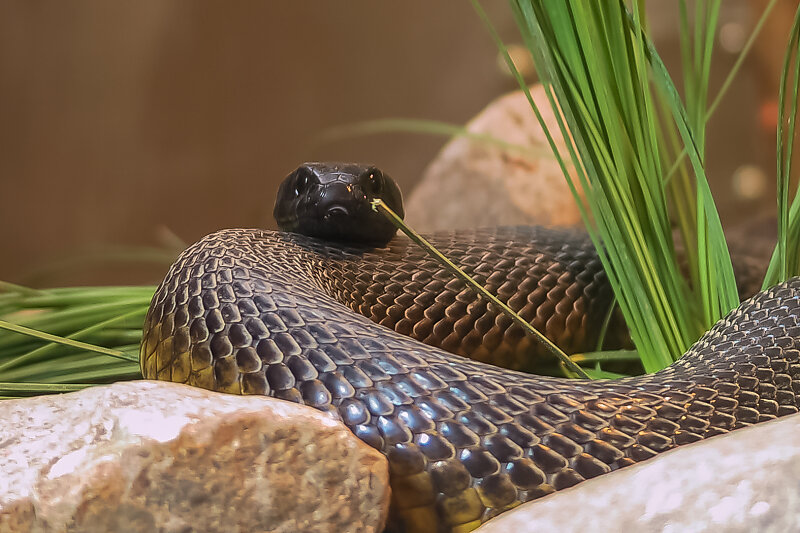


To date only a handful of people have ever been bitten by this species.This ultimately results in death without proper medical intervention.

Symptoms of envenomation include headache, nausea, vomiting, abdominal pain, collapse and paralysis.Paradoxin (PDX) appears to be one of the most potent, if not the most potent, beta-neurotoxin yet discovered.īeta-neurotoxins keep nerve endings from liberating the neurotransmitter acetylcholine Three-finger toxins inhibit post-synaptic nicotinic acetylcholine receptors in the neuromuscular junction and interfere with neuromuscular transmission, causing paralysis of the facial, bulbar, respiratory, and limb muscles that can lead to respiratory failure and death.Kunitz peptides found in venom inhibit serine protease activities, interfering with blood coagulation and fibrinolysis.The clinical effects from taipan venom include: When snake venom is injected, it is absorbed and enters systemic circulation, which is followed by a range of clinical effects depending on the snake.Upon biting, the masseter muscle squeezes the venom gland, which pumps the venom into the fang for delivery into the prey.The venom originates from the venom gland.An isolated population occurs near Coober Pedy in South Australia.There are records of inhabitance in New South Wales and, possibly, the junction of the Murray and Darling Rivers.Australia’s inland black soil plains between Western Queensland and South Australia.Royalty-Free Stock Photo Show Image Detail Australian snakes in a cage Royalty-Free Stock Photo Show Image Detail Inland Taipan ( Oxyuranus microlepidotus) in it's habitat, South Western Queensland Australia Royalty-Free Stock Photo Show Image Detail Oxyuranus microlepidotus, also known as Inland taipan, known as the world's most venomous and deadly snake found in central east Australia. Royalty-Free Stock Photo Show Image Detail Inland Taipan Snake Royalty-Free Stock Photo Show Image Detail The inland taipan, also commonly known as the western taipan, the small-scaled snake, or the fierce snake. Royalty-Free Stock Photo Show Image Detail Oxyuranus microlepidotus, also known as Inland taipan, known as the world's most venomous and deadly snake found in central east Australia Royalty-Free Stock Photo Show Image Detail Inland Taipan of Western Queensland Australia Royalty-Free Stock Photo Show Image Detail Inland Taipan of Western Queensland Australia Royalty-Free Stock Photo Show Image Detail Inland taipan, Oxyuranus microlepidotus, Australia, most poisonous snake. Royalty-Free Stock Photo Show Image Detail The inland taipan, also commonly known as the western taipan, the small-scaled snake, or the fierce snake. Royalty-Free Stock Photo Show Image Detail Inland Taipan of Western Queensland Australia Royalty-Free Stock Photo Show Image Detail Inland Taipan showing flicking tongue Royalty-Free Stock Photo Show Image Detail An adult inland taipan (Oxyuranus microlepidotus), the world's deadliest snake, resting on a sandy ground, Australia. Royalty-Free Stock Photo Show Image Detail Oxyuranus microlepidotus, also known as Inland taipan, known as the world's most venomous and deadly snake found in central east Australia. Royalty-Free Stock Photo Show Image Detail Inland Taipan Snake Royalty-Free Stock Photo Show Image Detail Inland Taipan Royalty-Free Stock Photo Show Image Detail Inland Taipan in strike position Royalty-Free Stock Photo Show Image Detail Inland Taipan Snake Royalty-Free Stock Photo Show Image Detail Inland Taipan in strike position Royalty-Free Stock Photo Show Image Detail Inland Taipan Snake Royalty-Free Stock Photo Show Image Detail Oxyuranus microlepidotus, also known as Inland taipan, known as the world's most venomous and deadly snake. Show Image Detail Inland Taipan Snake Royalty-Free Stock Photo Show Image Detail Inland Taipan in strike position Royalty-Free Stock Photo Show Image Detail Inland Taipan (Oxyuranus microlepidotus) worlds most venomous snake species.


 0 kommentar(er)
0 kommentar(er)
